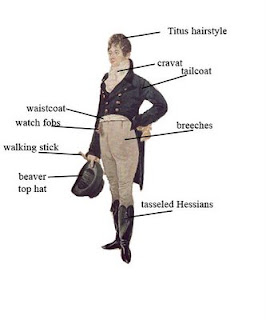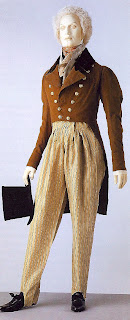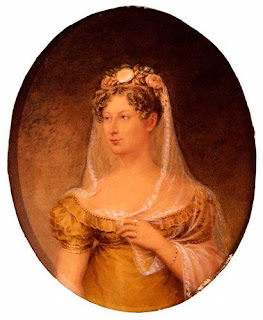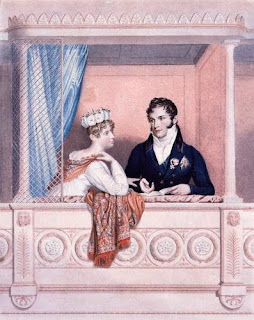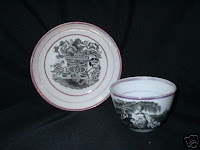Charles Bazalgette is at present writing the biography of his great-great-great-great-grandfather Louis Bazalgette (1750-1830), who was tailor to the Prince of Wales (later George IV) for 32 years, but who is quite unknown and has never been mentioned in any books. The only reason why he has been able to piece together his life story is because he researched him from the genealogical angle, a task that has so far taken him 15 years. As Charles told us:
This biography, which is planned to be ready to publish next year, had its origins in my genealogical research into the British branch of the Bazalgette family, of whom Louis (who was born in the Cevennes in southern France) was the patriarch. When researching Louis’ life, apart from the usual vital records, I hit the proverbial brick wall. He was an unknown man. He never got his name in the newspapers, apart from the odd modest donation to charity, and was never mentioned in contemporary accounts, diaries etc., of which I ploughed through a great number. He never advertised, probably because the Prince’s orders for clothes took up all of his manufacturing capacity. The fact that over many years I have been able to piece together his life story is due mainly to the ‘snapping up of unconsidered trifles’ and to painstaking detective work, plus those few measures of luck that lead the researcher up the right path, against the run of the play, which usually consists of Dame Fortune blithely pointing him down the garden variety.
The main point is that it’s very clear that Louis was a self-effacing, discreet and even secretive man. So, having become the Prince’s tailor when the latter was as young as eighteen, he was able to visit him to take and deliver orders almost clandestinely, which of course suited both of them very well, and though the quantity of clothes he supplied was colossal, he passed unobserved. His name did appear in the royal accounts as being owed far more than any other creditor, but otherwise, apart from amassing a large fortune, and then lending money to the Prince and his brothers, as well as to other prominent figures such as Richard Sheridan, unless, like me, you had followed him like a bloodhound, you would never have found this out.
So Louis was (until now) the Unknown Tailor, who made most of Prinny’s clothes from 1780 until at least 1795. By this time, the Prince had met the young Beau Brummell, and under his influence was beginning to look to English tailors for his clothes, and to dress in a more sober style. Another important reason why the Prince’s clothes orders to Louis diminished after 1795 was that he owed so much money to Louis, who had, by the good offices of Thomas Coutts, ensured that these loans were all in the form of debenture bonds, which Prinny (or rather Parliament) could not escape paying, that he needed to spread his debts elsewhere. Nevertheless, Louis continued to supply his fanciful uniforms, and livery for his household, until about 1812.
Louis was therefore the right man at the right time, providing an exclusive service of great quality and efficiency and almost imperceptibly making himself a millionaire, in modern terms, as a result. He was then able, in his unnoticed way, to become a propertied gentleman and to enjoy his dotage as Lord of the Manor of Great Bookham.
A few words about the research I did…I did a great deal of reading around the subject and the period, and fruitless searching for mentions of the tailor Prinny used. All accounts mention the later tailors, such as John Weston, Schweitzer & Davidson etc. I started a chronology of known events in the Louis’ life, which looked rather sparse until I discovered that Louis was a customer of Coutt’s Bank in the Strand. If you are researching a potential customer it is always worth checking with their archivist. I was allowed to examine and photograph the original ledgers, and therefore had all of Louis’ bank statements fron 1792 until 1830. This was before digital cameras so each page was on a 5×7 print. As you can imagine, reading the prints with a magnifiying glass and transcribing all of the entries into the chronology took a great deal of time, but it was worth it because I learned a great deal about his activities, and so was able to research the people mentioned.
Although I used to visit archives personally while we lived in England, we moved to western Canada twelve years ago. Fortunately the growth of the internet the digitization of records, and the arrival of online catalogues etc has done nothing to to harm my research at all. Quite the opposite. I had the first draft almost done, when by mere chance I discovered that all Louis’ accounts with the Prince between 1786 and 1795 were quietly rotting away in a box in the National Archives. I had all 300 pages photographed (digitally this time), and am about half-way through transribing these records. They have added immeasurably to the tailoring content of the book, which previously had been sadly lacking before. I’m quite glad to have discovered these records late in the day, when a lot of the more humdrum work has already been done. It’s like the Devonshire cream on the scone! I have had to learn a great deal about 18th century tailoring in a few months, and am still learning, but it has been quite fascinating.
Some excerpts from the book, and other information on 18th century tailoring, can be found on Charles’ blog.


